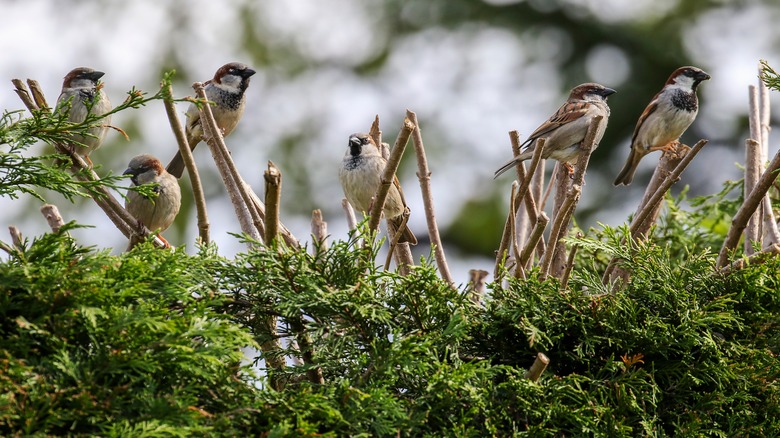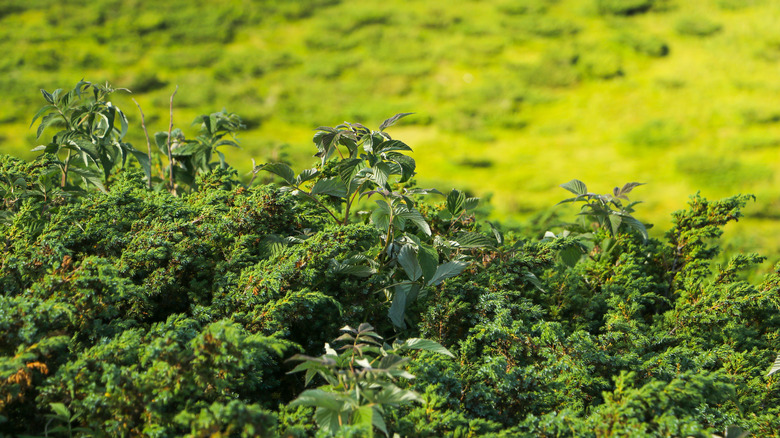How To Build A Living Fence To Attract Birds And Pollinators To Your Yard
A living fence is a great alternative to traditional wood or plastic barriers for your yard. In addition to looking gorgeous and adding privacy to your yard, a lush, living fence made from native species is one of the best ways you can support your local ecosystem of birds and pollinators. According to the National Wildlife Federation, by intentionally adding native habitat to your backyard, your garden can support up to two times as much wildlife as a traditional yard made up of mostly turf grass.
The National Wildlife Federation recommends using a mix of native evergreen and flowering trees or shrubs to create a biodiverse hedge that serves as both shelter and food source. You also want a mix of flowering species that bloom at different times of year to offer nectar to both early and late pollinators. Likewise, species that bear fruit at different times of year can ensure that your local birds always have at least one food source available all year round. For the best results, choose native species that are adapted to the light, soil, and moisture conditions where you want to plant this living fence. Also, opt for more shrub-like or bushy species to create that interwoven green wall look. Above all, try to include as much variety as space allows.
How to design your native living fence
To design your native living fence, start with evergreen shrubs or trees. Many species of cedar or juniper grow in a narrow column shape that provides a great evergreen foundation for a living fence. For example, you can plant a fast-growing Taylor juniper tree for outdoor privacy and also provide year-round shelter for birds. Winterberry (Ilex opaca) is another great evergreen option that provides shelter as well as a critical food source through winter.
Next, choose your flowering and fruit-bearing species. Native fruit trees like pawpaw (Asimina triloba) or crabapple (Malus coronaria), along with vines like raspberry (Rubus idaeus), Carolina jessamine (Gelsemium sempervirens), trumpet honeysuckle (Lonicera sempervirens), and Virgin's Bower (Clematis virginiana) will give you a succession of fruits and nectar-rich blooms from late winter through fall to feed pollinators all through the growing season. Meanwhile, black chokeberry is a native berry shrub that'll have birds flocking to your yard all fall and winter long when most other fruit-bearing plants have gone dormant.
Once you've chosen your species, simply plant them together in a row, following minimum spacing recommendations so that they can grow into a dense, green living wall. Water your new plants regularly for the first year or two so that they can become well established. After that, your plants should be established enough to thrive on their own. However, if you prefer a tidier look, you may need to prune some of the plants in your living fence occasionally to keep everything in check. Just note that watering and pruning requirements may differ a bit between the species you've planted.

